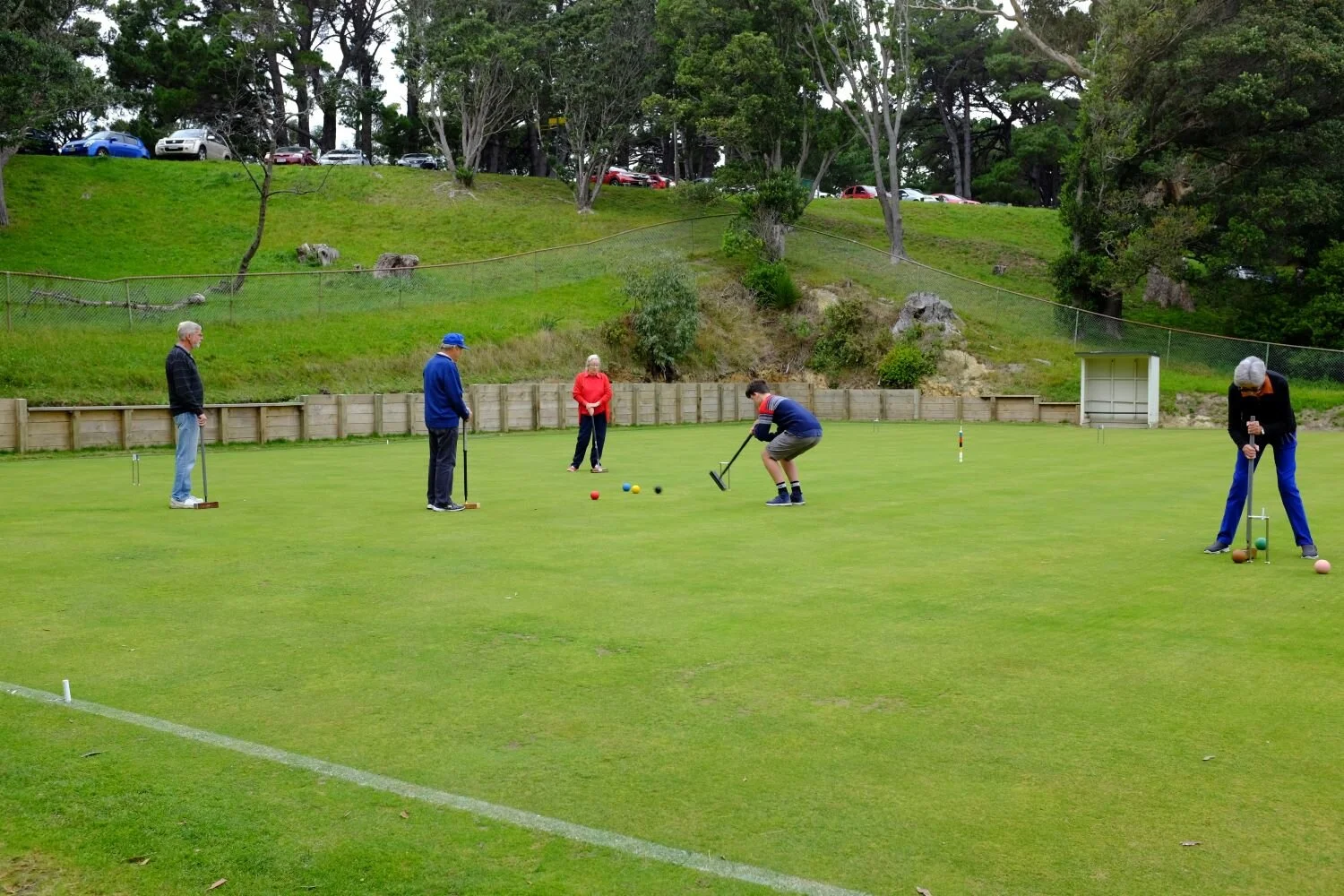The Game of Croquet
We play two types of Croquet: Golf Croquet and Association Croquet
Both forms of the game involve exercise, physical skill and strategy and tactics.
Croquet suits both young and old. Some enjoy it for the social elements of club play, and others play it competitively.
It is truly a game for all reasons.
Golf Croquet
Has a much simpler set of rules and therefore can be learned more quickly than Association Croquet
Games are generally more interactive and take less time to complete than Association games
The basics of the game
There are 4 different coloured balls, the blue and black balls play against the red and yellow balls
Games can be either singles or doubles, in doubles each of the two partners has one ball only
Each person has only the one stroke in each turn. The balls are played in colour sequence – blue, red, black, and then yellow.
Before the game there is a toss and the winner then plays blue – the first ball towards hoop one, followed by the other player(s) in the game
Everyone tries to run the same hoop (starting with hoop 1), and a point is scored for the side whose ball first runs the hoop in the correct direction
As soon as one player makes that hoop, then all players contest the next hoop in order
Games can consist of the best of 7, 13 or (even) 19 hoops, so that the first player to make 4, 7 or 10 hoops is the winner.
If two games are being played on the same lawn then different coloured balls are used for the second game – in sequence green, pink, brown and white.
Tactics
The objective is to get through a hoop before the opponent does and three basic strategies are used to achieve this
knock the opponent balls away
put your ball between the opponent’s ball and the hoop or even to protect your other ball if it is in a good position
jump over the opponents ball
Making a Hoop
Lining up a Roquet
Association Croquet
Modern croquet is played as a singles or doubles game in which two sides compete against each other by hitting balls through a sequence of 12 hoops.
In singles one player takes two balls and in any turn decides to play whichever ball is better placed. In doubles, partners take one ball each but they must also decide which is the best ball to play during a turn.
By playing a sequence of strokes, players may keep a turn going and complete several or all hoops in a single turn.
The game is won when two balls of one side complete all the hoops and “peg out”, or if they are ahead when time is called.
The art of the game is to master the physical side of using a mallet to hit balls very accurately, and to be able to plan a winning strategy.
Scoring by making hoops
The balls are hit through six hoops in one direction and then through the same six hoops but in a reverse direction.
The final shot is to hit the peg in the middle of the lawn.
The side which “pegs out” both balls wins the game. As each ball may pass through 12 hoops and then hit the peg, it can earn 13 points. With two balls to a side, a game can thus be won by scoring 26 points.
Most matches are played to a time limit, and if this is reached, the winning side is the one which has scored the most points.
Sequences of strokes
Players make a sequence of shots by hitting their ball onto another (called a roquet).
The player then places their ball against the hit ball and plays a two-ball shot(called a croquet shot) in order to get near another ball or a hoop.
They then play a further shot (a continuation stroke) to try and hit yet another ball or pass through a hoop.
Thus the sequence of shots is roquet, croquet and continuation.
Making breaks
In any one turn, a player may use any of the other three balls on the lawn once in making the sequence of shots before making a hoop.
When a hoop is made, the three other balls may be used again.
By using up to three of the shot sequences, a player may move from one hoop to the next and thus make a whole series of hoops in the one turn – called a break.
Coloured clips placed on hoops are used to mark a player’s progress.
Use of strategy
The game involves considerable strategy in placing balls in order to make breaks, and skilled players can finish a game in a few turns.
Many players do not achieve this level of skill, but can still play successfully against more skilled players in handicap games where they can have extra turns (called bisques) which reflect the differences in ability.



